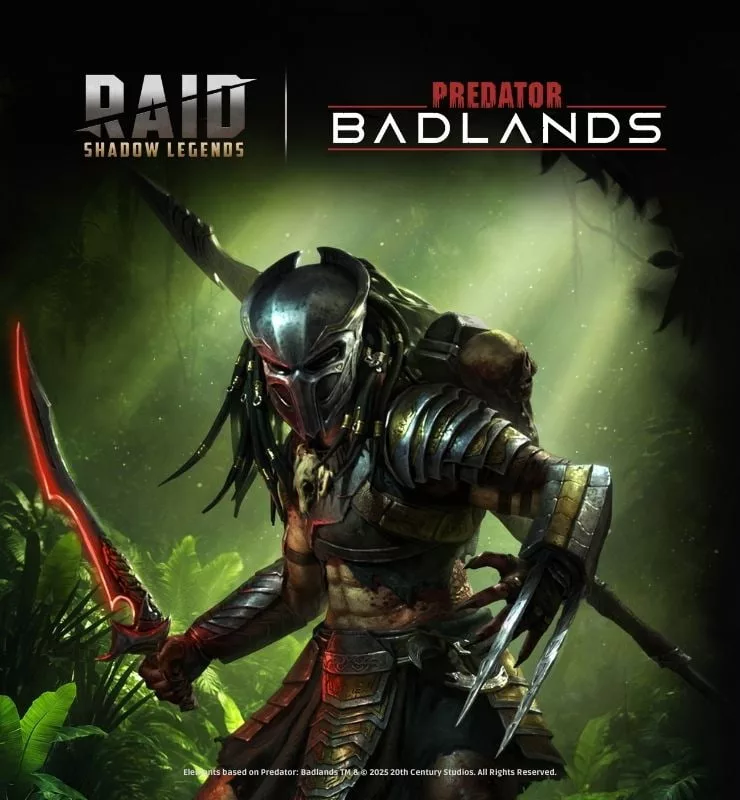
The barriers to entry associated with building video games have fallen in recent years, as the tools required have become less expensive, open-source, and even free to use. These pieces of software usually fall into the category of a pre-made game engine.
While they tend to do exactly what you might expect, namely, provide all the moving parts that make your favourite worlds come to life, engines can still seem like alien technology to novice game designers.
Today, we’re going to break down the various leaders in this enigmatic space so that you can start your journey to the top of the video game charts.
First, though, let’s define what exactly we mean by the term video game engine.
In brief, an engine provides everything required for a game to run, including physics, level structure, sound, player inputs, as well as elements like the inventory, support for graphics, and the placement of enemies and other NPCs.
Engines are often used over generations, which is one of the reasons that games released early in a franchise’s life tend to look and behave differently from later ones. A few commercial examples are:
- RE Engine (Capcom)
- Luminous Engine (Square-Enix)
- Frostbite (DICE)
In order to immerse fully into a game, the best game engines suspend players’ sense of disbelief, making them unaware of anything happening “under the hood” but simple video game magic.
So, let’s dive into the world of the game engine with three of the biggest ones around:
1. Unity 3D
As a gamer, there’s a good chance that you will have heard of Unity 3D even if you have no idea what a game engine is.
This is because it’s often mentioned on the splash screens while a game is loading, along with the names of developers, publishers, and other tools involved in the creation of that particular title.
Unity 3D is the most popular solution for building games, holding a 50% share of the game engine market on mobile phones, PC, and consoles*, though it has applications well beyond portable entertainment.
Unity currently claims 71% of the top 1,000 mobile games in its portfolio.
One of several free game engines available online, Unity 3D can be used to create just about anything based on graphics, including browser games, CGI movies, games, trailers, and animation. The company itself defines these products as RT3D or Real-Time 3D.
However, Unity also has settings to work in 2D, which you can enable shortly after you open the program for the first time. For designers coming from tools with a more visual interface, such as Enterbrain’s RPG Maker series, Unity 3D can appear a little daunting.
Almost everything has to be coded using C# or Java, though it’s entirely possible to put something together in an hour or so just via YouTube tutorials.
This brings us to one of the greatest strengths of Unity – community support. The Unity website has an exhaustive amount of documentation but creators also benefit from educational material on YouTube, Udemy, and other websites that allow user-created content.
Much of this media is also genre-specific, which means that videos about inventory systems in RPGs or ways to implement microtransactions on mobile platforms are easy to find.
Unity also maintains an asset store so that reluctant artists can still add some polish to their first Snake or Space Invaders clone.
Arguably one of the biggest concerns facing first-time developers is whether a game engine will be enough to create something special. Well, worry not – Unity 3D is popular with both AAA developers and people just starting out in their bedrooms.
It’s also scalable depending on what you intend to use it for and/or how much money your business is currently making.
For example, Unity is free with some small restrictions on the condition that it’s not being used at a company with an income of more than $100K/year. Packages of up to $4,000/month are available at the enterprise level.
You probably won’t need that kind of support from a game engine until you’re competing with the big studios, though.
Overall, Unity 3D is the most accessible and one of the best-supported free game engines in the world today.
*All figures from Unity.com
2. Unreal Engine
Much like Unity 3D, you’ve probably heard of this one by proxy too. Epic Games’ Unreal Engine has been around since 1998, albeit as the game engine behind one of the most popular shooting games (Unreal), as well as its various spin-offs.
Since then, the software has blossomed through a handful of other iterations to stand on the cusp of a new one. Unreal Engine 5 will was released in 2022. Of course, that kind of longevity implies something a bit special.
Unreal Engine is currently Unity’s strongest competitor due to its exceptional graphical capabilities. So, let’s dig into what this storied video game engine can do for the budding game designer.
This product has a slightly different objective from its competitors, but is otherwise a game engine like any other. This time, though, Epic Games also lists tasks like architectural design and services for TV among its many possible applications.
It’s worth noting that Unreal isn’t really built around an appeal for newbies, as its coding language (C++) might be considered a little archaic today. It also lacks Unity’s more intuitive interface.
In other words, Unreal Engine is a popular choice for AAA developers and frequently sneaks its way into blockbuster releases. But let’s forget about the comparisons and focus on what Epic Games’ flagship engine can actually do.
As mentioned, Unreal Engine is a graphical titan that appeals directly to artists, level designers, lighting experts, and simple tech aficionados.
This platform includes support for volumetric fog, pixel-accurate shadows, post-processing, and “billions of triangles”, to quote the marketing material for Unreal Engine 5.
As far as the future of graphics goes, Epic Games are chasing photorealism with no performance loss, which has been the dream of video games designers since Pong proved that it’s possible to make boxes move on a screen.
Of course, this kind of advanced development requires hordes of experts rather than lone hobbyists. One of the main draws of Unreal Engine outside graphics is its native multiplatform tools.
With the 2022 update, in particular, the game engine will be able to run anything on anything – or, at least, take a PC-made game and port it to consoles without much difficulty.
For systems and publishers that have struggled with the quality of game ports in the past, such as the Nintendo Switch, this functionality could be extremely valuable to just about everybody involved in designing and playing video games.
As far as operating costs go, Unreal Engine can be a little complicated, as royalties are involved. This is one of the great advantages of Unity 3D over Unreal, according to the former’s CEO. Unreal’s free-to-use licences come in two types, namely, Publisher and Creator.
The difference here is that 5% royalties are due on the Publisher license once a product earns over $1m. Enterprise options are available from Epic Games on a negotiated plan, although a one-size-fits-all plan can be found at $1,500/year.
3. Amazon Lumberyard
Amazon has not enjoyed much success at all in the video game world. Granted, it pulled off something of a coup when buying Twitch and recently released the MMO New World. But those two occasions are the stars in an otherwise gloomy sky.
Despite having roots stretching back more than a decade, Amazon Games didn’t venture far from mobile and social media apps until 2018, when it released a title based on the popular Amazon Prime show The Grand Tour.
Its adventures on console and PC have been nothing short of a disaster, with five games cancelled to date – including one (Crucible) after launch. So, it’s arguable that New World has a point to prove.
Perhaps more importantly for this article, so does the technology behind it – Lumberyard, one of the few completely free game engines.
Lumberyard deserves its place on this list because it’s a new and interesting development in the realm of the game engine. Let’s forget everything we know about Amazon Games, then, and charge on with our analysis.
First, Lumberyard is a modified version of the CryEngine, another development environment known for Crytek games like Far Cry and Crysis.
Note that Lumberyard is a “fork” of CryEngine (and an arguably much-improved version of it) so developers already turned off by the mere mention of the latter shouldn’t be too alarmed.
Given that the CryEngine is known for its graphical prowess and the memes it spawned as a consequence (e.g. “Can it run Crysis?”), Lumberyard sits firmly in the same category as Unreal rather than Unity 3D.
If you’ve read the other two entries on our list, that should tell you a few things right away. Lumberyard isn’t as user-friendly as Unity 3D and it lacks the exhaustive documentation associated with that game engine, as it’s such a new entry into this space.
However, for AAA developers, Lumberyard could potentially be millions of dollars cheaper over the course of several years. After all, Unreal Engine’s 5% royalties translate into a lot of money when studios like CD Projekt Red can shift 13m units in a launch month.
So, what makes Lumberyard stand out as the potential best game engine? Amazon’s technological assets are almost second to none and some of its most popular tools are integrated with its debut game engine.
A good example is Amazon Web Services (AWS), which is a cloud computing platform that can streamline the introduction of multiplayer into Lumberyard games.
Unfortunately, the video game aspect of AWS, GameLift, is a premium service charged at a pay-as-you-go rate.
It’s not overly expensive given the kind of resources multiplayer games need just to get off the ground, scaling upwards from about $8/month, but recurring bills are rarely popular with smaller studios.
4. The Verdict
The video game engine has a long and varied history, with the 3D variety going back to 1995. This platform – XnGine – was engineered by the still-active developer Bethesda and was involved in the creation of early The Elder Scrolls titles Daggerfall and Battlespire.
Before these halcyon days, games were made from the ground up, with every piece and controller brand new. Engines now let entire game franchises exist in precisely the same world, right down to the code that governs how the virtual wind interacts with a character’s hair.
They can be expanded, modded, ported, and otherwise prodded and poked until suitable for the next big game release, too.
As a beginner in any of a number of industries, it’s hard to see beyond Unity 3D as the ultimate stepping stone into video game design.
Combine it with other free tools, like Notepad 3D, Inkscape, YouTube, and Blender, and it’s possible to have almost everything you need to produce a game – other than time, some writers, an artist, and discipline, of course.
However, some reviewers have noted that Unity tends to fall down when games require the highest graphical fidelity. This is where our other two options come in.
Unreal Engine is our pick over Lumberyard but largely because Amazon’s engine could still be considered as an unknown property. When it comes to switching an existing project to Lumberyard, though, Jeff Bezos’ brainchild wins hands-down.
Developers note that Lumberyard can take over the reins in a matter of hours or days.
Choosing the Best Game Engine Based on Your Needs
Ultimately, the best game engine depends on what you and your company require of development software. Do you want to learn and play around with something you don’t fully understand, or are you a student looking to break into the industry after graduation?
To know even more, and get a fuller picture on the industry and how to advance in games creation, check our “How to Make a Game?” post.











